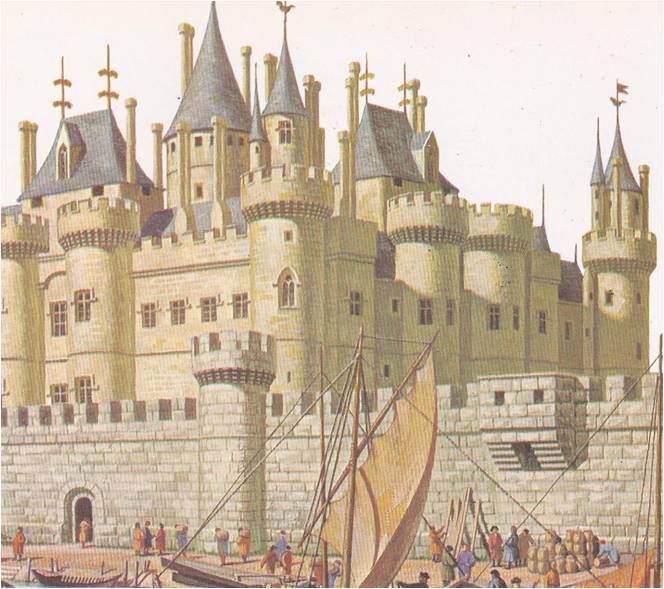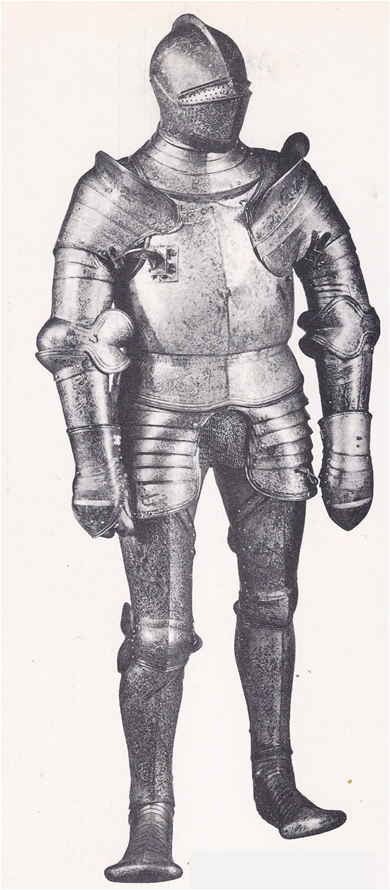Pierre watched the merchant caravan clatter down the narrow dirt road that led through the manor. Pack mules threaded their way to avoid the deep puddles, while the horses strained as they pulled the creaking two wheeled carts. Pierre envied the merchants as well as the sturdy bowmen who guarded the caravan. During his seventeen years Pierre had never been more than a few miles from the manor where he had been born a serf. He was not free to move around as were these merchants who were city folk. Was it true, as Pierre had heard, that a serf who escaped to a town or city and lived there for a year and a day was forever free? He wondered. The merchant caravan disappeared around the bend in the road. Should Pierre follow it? To stay on the manor meant a serf’s life — a life of back-breaking toil. That night after dark, his mind made up, Pierre slipped unseen across the fields and onto a narrow path that led over the surrounding hills. For two nights he walked as rapidly as he could, sleeping fitfully in deep thickets during the daylight hours. Soon after sunrise on the second morning the forest trail led to a wider road, an hour’s journey out of the city of Lacourt. Pierre helped to free an oxcart bogged down in the mire of the roadside ditch and then trudged toward Lacourt in the company of the grateful driver. The young serf’s eyes grew wide with wonder at the unfamiliar sights as he approached the outskirts of the city. Completely encircling it was a wall of stone four times the height of a man. At one point the wall was pierced by a gateway, its great oaken doors swung back. Through the opening Pierre could …
Read More »The Italian Kings of France 1494 – 1590
In all Europe there was no greater admirer of Italy than Francis I, king of France. Francis practiced Italian manners in his court, built Italian palaces in his parks and kept Italian books in his library. He collected Italian paintings and the artists who painted them. Indeed, the king admired Italy so much that he wanted to conquer it all. Francis was not the first ruler to feel these strong Italian longings. In England, Spain and Germany, kings and princes were busily remodeling their courts, their castles and themselves in the Italian manner. Though the little states of Italy were growing poor and weak, it seemed that every richer, stronger nation in Europe was struggling to catch up with them. Actually, it was the Renaissance that Francis and the others were striving to match — the displays of splendour, the well-bred elegance of the courts, the wisdom, and of course, the riches. Western Europe was waking up to the new age, after long years of poverty, confusion and fear brought on by the wars and plagues that destroyed the old world of chivalry. Through the Alps from Italy came an army of peaceful invaders, merchants first, then artists and men of learning. Along with their bolts of wool and Silk, their books and paintings, they brought the Renaissance. The Europeans, gradually stirring with the excitement of the new age, turned to Italy where its wonders had first appeared. Some sent their scholars and artists to Italy to study. Some, like the French, sent their troops. In 1494, little Charles VIII of France clapped a gilded helmet over his shaggy red hair, marched down the peninsula and conquered Naples. For three months he paraded about his new city, while four embarrassed Neapolitan noblemen trotted beside him, holding a golden canopy over …
Read More »Milan, City of Splendour and War 1277-1515
Milan’s most important business street had no displays of velvet cloaks, bright bolts of silk, or cloth-of-gold. It was a dusty, smoky street, made hot by the fires of forges and filled with the din of hammers shaping steel — the Street of the Armourers. Milan made the finest armour in the world. In the Middle Ages, the crusaders came there for chain mail and it was said that entire armies were outfitted in a few days. Later, the fashions of war changed. Knights wore heavy suits of jointed steel plates that covered them from head to toe and elegant helmets, gilded, engraved and topped with plumes. The Milanese armourers became artists at molding and carving metal, their sales men were welcomed in every court in Europe and the Street of the Armourers became busier than ever. Armour was the right specialty for Milan, for the city and its rulers seemed to specialize in everything warlike and violent. The dukes of Milan were iron-fisted tyrants, who loved displays of splendour and sometimes cruelty. They did not hide their power like the cautious Medici in Florence. Indeed, they made a show of their strength and wealth. It discouraged invaders, rivals and over-ambitious relatives. The dukes’ domain was rich and as large as any state in Italy. The fertile plain of Lombardy, which lay between the Apennine Mountains and the Alps, attracted as many would-be conquerors as farmers. The prosperous little Lombard towns that the dukes overpowered were quarrelsome and the noblemen of Lombardy never stopped stirring up revolts. To hold on to their dukedom, the rulers of Milan employed the toughest warriors in Italy. They frightened their subjects with harsh laws, rewarded them with pageants and impressed them with magnificent palaces. Splendour, fear and power — these were the specialties of …
Read More »


